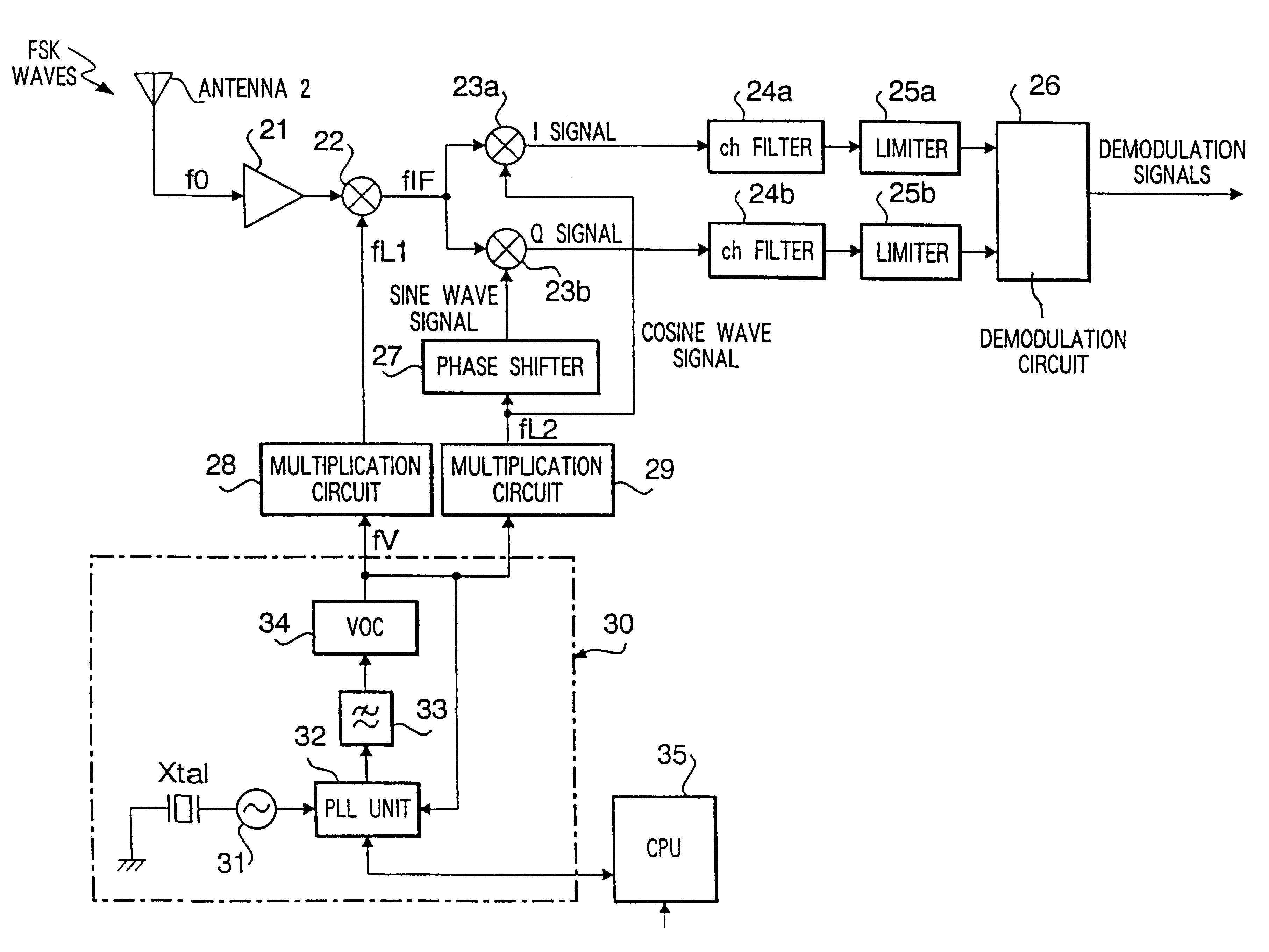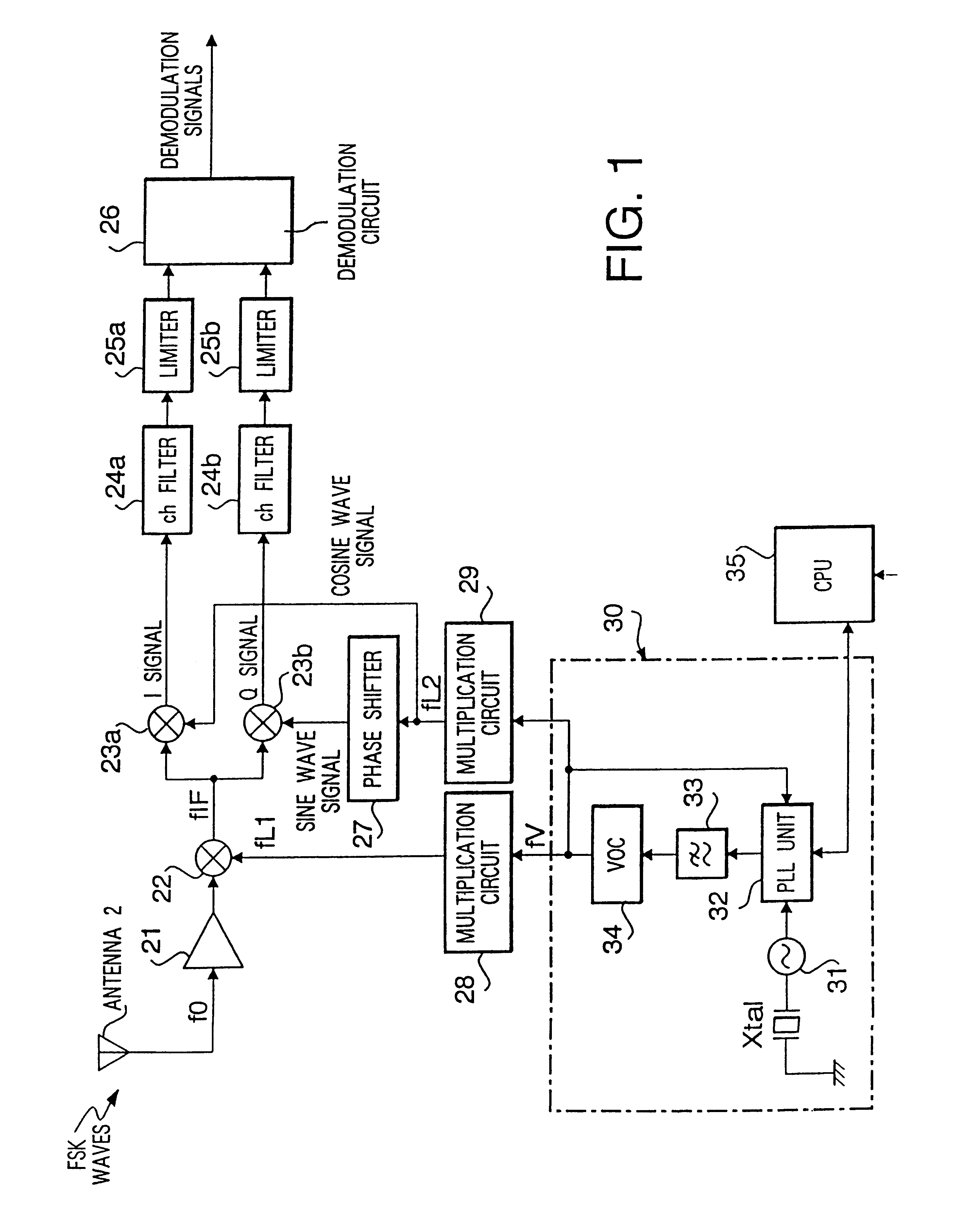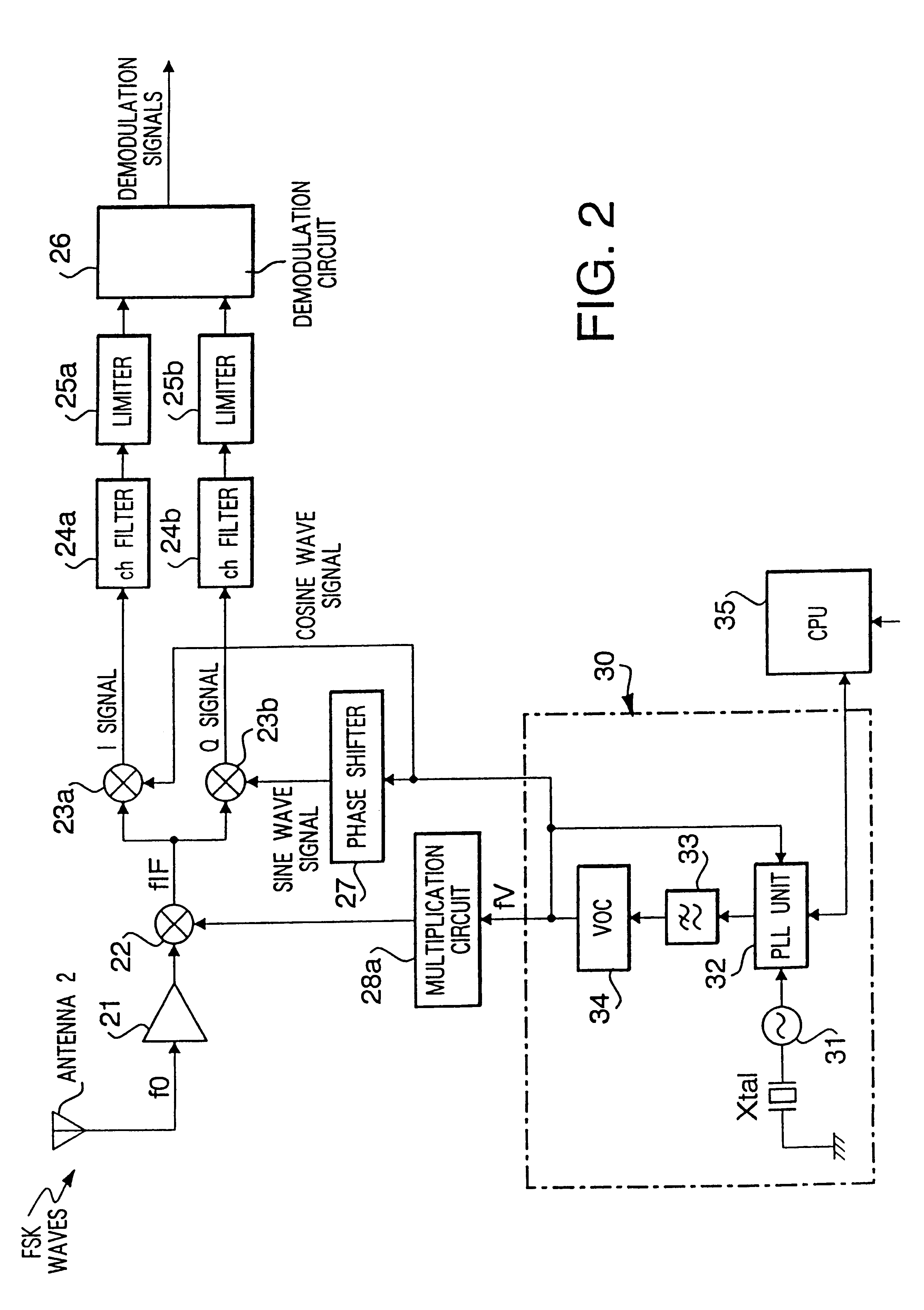Radio receiving method and radio receiving apparatus
- Summary
- Abstract
- Description
- Claims
- Application Information
AI Technical Summary
Benefits of technology
Problems solved by technology
Method used
Image
Examples
second embodiment
FIG. 2 is a block diagram showing a configuration of the second preferred embodiment. The basic construction of the second preferred embodiment is identical to that of the first embodiment shown in FIG. 1, wherein the second embodiment differs in that a multiplication circuit 29 is removed from a pass of supplying oscillation signals from the local oscillation unit 30 to mixer 23a and phase shifter 27.
The second preferred embodiment is provided with only a multiplication circuit 28a which multiplies "x" times the oscillation signals (fV) coming from the local oscillation unit 30 to sends the same to the mixer 22. Oscillation signals (fV) coming from the local oscillation unit 30 is directly supplied to the mixer 23b through the mixer 23a and phase shifter 27. All the other construction is identical to that of the first preferred embodiment.
Actions of the second preferred embodiment are the same as those of the first embodiment. However, the frequency relationship of frequency conver...
third embodiment
FIG. 3 is a block diagram showing a configuration of the third preferred embodiment.
The basic construction of the third embodiment is the same as that of the first embodiment shown in FIG. 1. However, the third embodiment differs in that a multiplication circuit 28 is removed from a pass of supplying oscillations from the local oscillation unit 30 to the mixer 22.
The third preferred embodiment is provided with only a multiplication circuit 29a which supplies oscillation signals (fV) coming from the local oscillation unit 30 to the mixer 23a after multiplying the same "y" times, shifts the phase of oscillation signals (fV) from the local oscillation unit 30 ninety degrees (90.degree.) by a phase shifter 27 and supplies the same to the mixer 23b. The oscillation signals (fV) coming from the local oscillation unit 30 are directly supplied to the mixer 22. All the other construction is identical to that of the first preferred embodiment.
Actions of the third preferred embodiment are the ...
fourth embodiment
FIG. 4 is a block diagram showing a configuration of the fourth preferred embodiment.
The fourth preferred embodiment has a feature of greatly varying the receiving frequencies (f0 to fn), which can meet a requirement where the service frequency bands are different according to districts.
The basic configuration is similar to that of the first preferred embodiment shown in FIG. 1. However, the fourth preferred embodiment is provided with an antenna varying circuit 20 for changing the tuning frequency of antenna Ant 2 by control signals to change the frequency received from CPU 35 and a variable high-frequency amplification circuit 21a for carrying out the high-frequency amplification by changing the tuning frequency by frequency changing control signals coming from CPU 35 to receiving signals (f0 to fn) coming from the antenna circuit 20.
Furthermore, variable multiplication circuits 28b, 29b which vary multiplication frequencies corresponding to the frequency changing control signals ...
PUM
 Login to View More
Login to View More Abstract
Description
Claims
Application Information
 Login to View More
Login to View More - R&D
- Intellectual Property
- Life Sciences
- Materials
- Tech Scout
- Unparalleled Data Quality
- Higher Quality Content
- 60% Fewer Hallucinations
Browse by: Latest US Patents, China's latest patents, Technical Efficacy Thesaurus, Application Domain, Technology Topic, Popular Technical Reports.
© 2025 PatSnap. All rights reserved.Legal|Privacy policy|Modern Slavery Act Transparency Statement|Sitemap|About US| Contact US: help@patsnap.com



